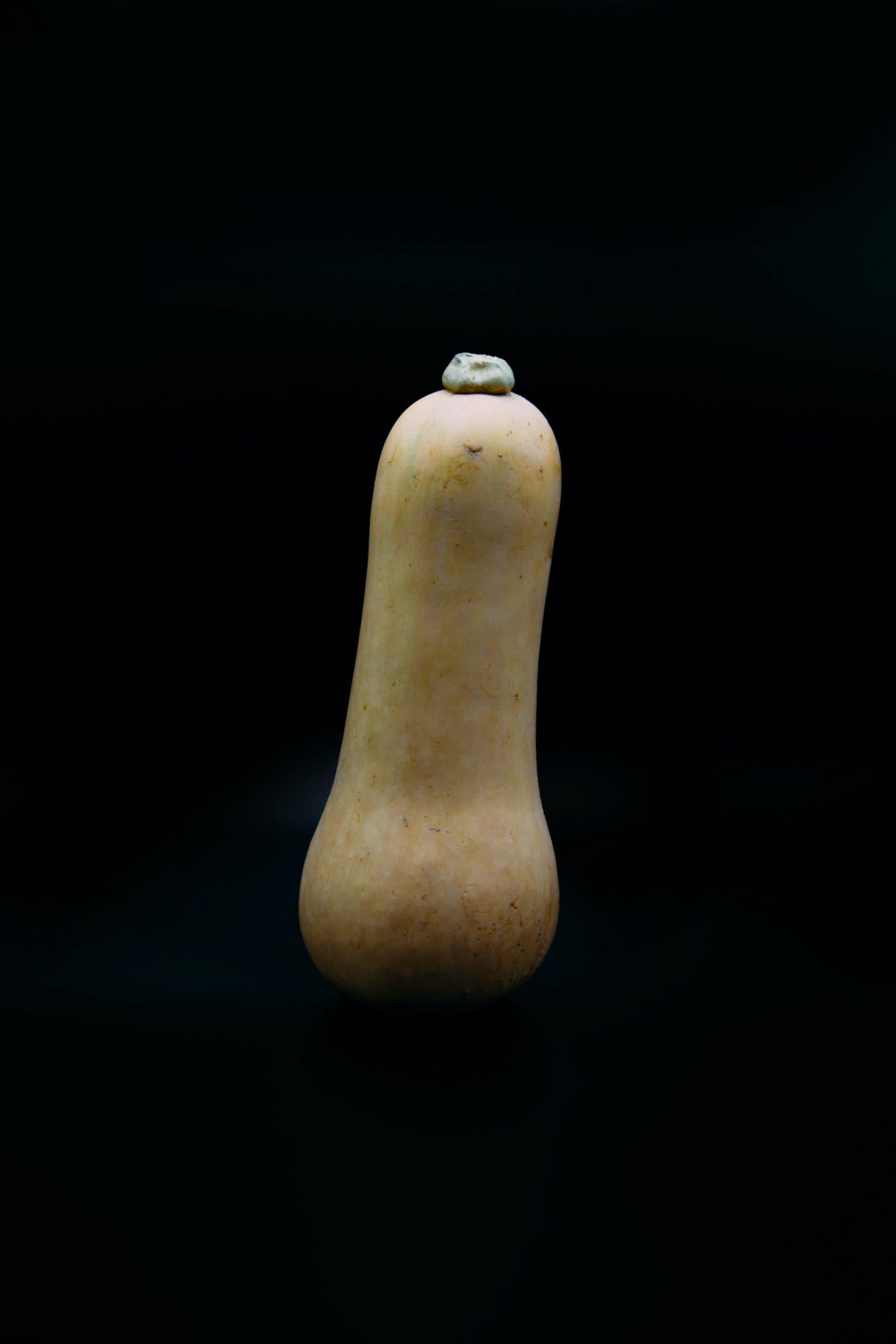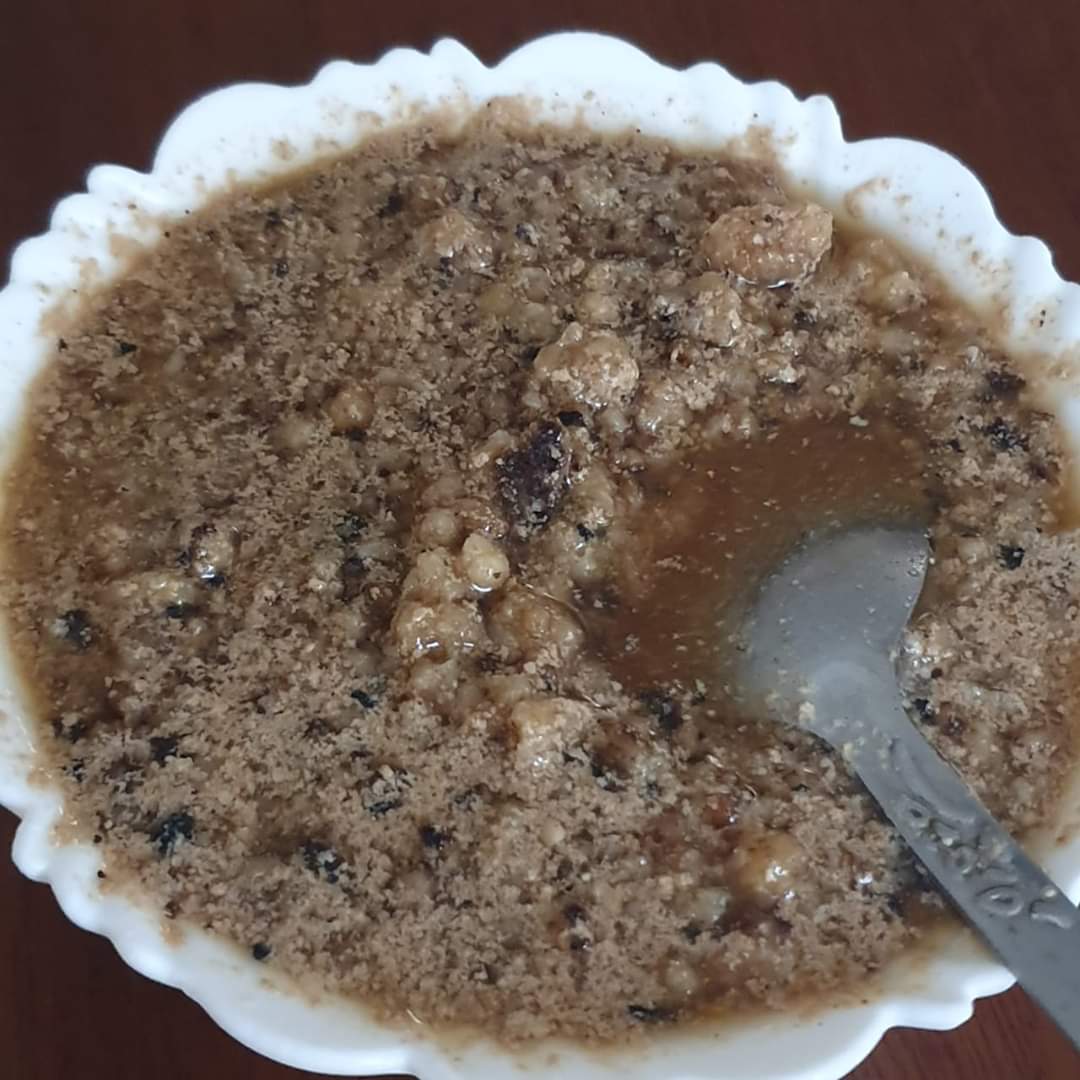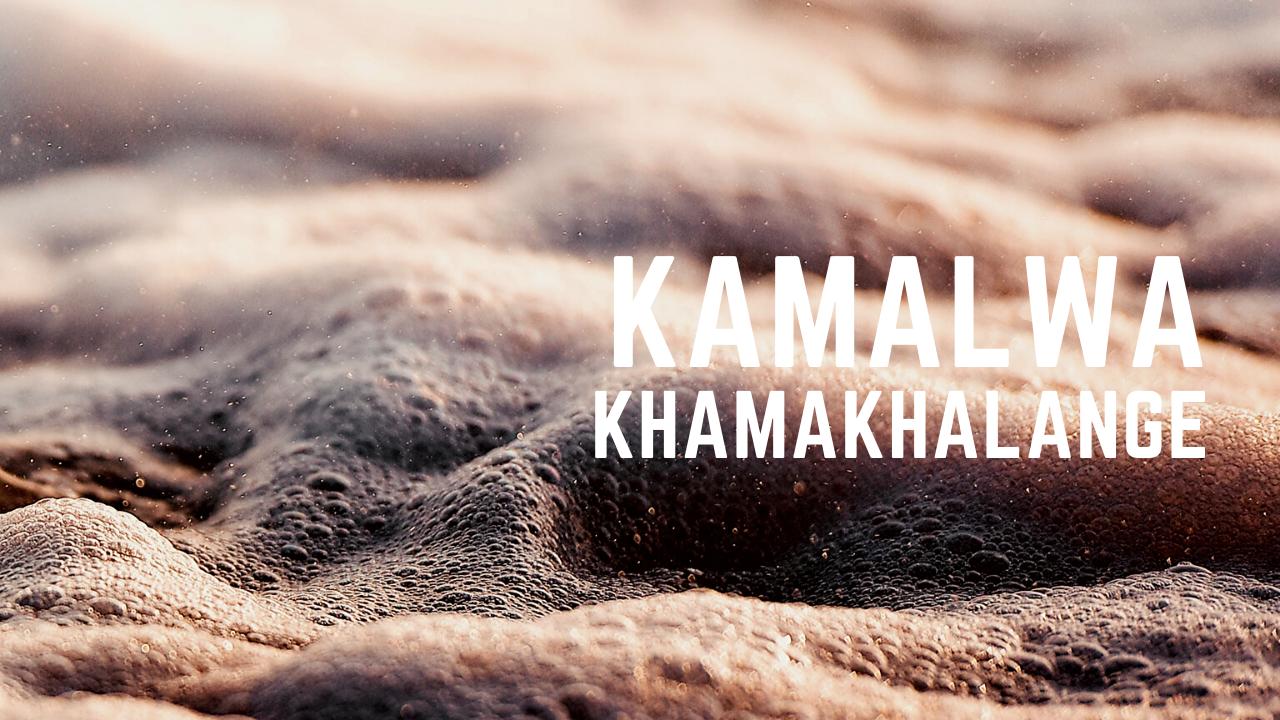Among the Luhya the traditional beer, kamalwa, is made from spontaneously fermented maize flour. The fermented flour is sun dried then fried in a pan until it assumes a coarse powder form. When in this state, it is known as kamalwa kamakhalange or simply kamakhalange.
Also: Makhalanje, tsimbale, mkarango.
My people simply cannot resist kamalwa kamakhalange. If you have been to Webuye, Chwele, Kimilili, Bungoma town or any of our market centers an town, you will find women hawking kamakhalange. This is because my people cannot sleep in the same house with kamakhalange. It is a much beloved snack cum cereal.
But it hasn’t always been that way. The cultural significance of kamalwa kamakhalange goes beyond it being a handy high energy snack. The humble kamakhalange has:
- been paid by kings as bride price. Kings, or kings to be, have also relied on the fermented cereal for sustenance;
- during the traditional Bukusu circumcision ceremony, kamakhalange is primal to a rite that one must undergo in order to face the knife;
- as a trap for, likhanga, guinea fowls;
- in more contemporary times, kamalwa kamakhalange has proven to be an apt stop gap in fueling the growth sprout of our our adolescent boys and girls in boarding schools;
- finally, we listed kamakhalange as a food that could come in handy in these times uncertain of coronavirus.
Here are stories on the humble makhalanje that show just how intertwined this easy to prepare food is with mulembe culture.
When the Bukusu chief Namachanja wa Khisa paid kamalwa kamakhalange as bride price
Sometime after 1862 when Namachanja wa Khisa rose to leadership at only 22 years of age, and before 1875 when his son who would grow up to be the great Bukusu chief Sudi wa Namchanja is born, Namachanja wa Khisa was a disturbed man.
Namachanja via an unlikely path has risen to leadership among the Bukusu. But his kingship was incomplete for he lacked an heir. According to the excellent blog on Bukusu history and culture, Dimples, the search for an heir had been long.
First there was Mukoya, from Bawanga Bamutsetse the mother of a baby girl who Namachanja gave the beautiful Luhya girls name Khakasa meaning the beautiful/good one. Mukoya was daughter of Sakwa, the uncle of Nabongo Mumia who ruled the Bawanga Mukulu (Wanga Kingdom). If only Khakasa had been a boy!
Then a frustrated Namachanja wa Khisa married Mulati, an Omusamia girl, whose enganana negotiations saw a certain quantity of kamalwa kamakhalange fit for bride price. By all intents an purposes, Mulati is a queen and you can imagine the arms race between her an her co-wife to bring forth an heir. But still, no luck.
So Namachanja who must have bethrown his bedroom marathon genes to his yet to be born heir — for Sudi wa Namachanja was a prolific seeder — enlisted more help for his two wives. It is only in 1874 when he marries Obilika another Omusamia girl for two Samia jembes, that in 1875, he’s begotten a son who he names Sudi.

The making of a man and kamalwa khamakhalange
During khuminya the last person to be called is the paternal uncle. Before omusinde calls his papa omutiti/omukhulu, a small pot is placed outside the initiate’s father house. In this pot, kamalwa kamakhalange is put in.
The omusinde is then ordered to go to the river to fetch water in the company of two other boys. This fetching of water is of immense cultural significance. Among other things, it symbolizes the omusinde ‘fetching’ his wealth and blessings.
On his return, omusinde pours in water the water from the river into the pot with kamakalange. This rite is known as khuchukhila, which in Lubukusu means pouring. Within three to four days, the beer that is especially for the circumciser, which they will drink while counseling the boy after circumcision.
I remember a certain cousin of mine suffering quite an embarrassment when his kamakhalange refused to ‘cook itself’ into beer. Three days, four days, five, six nothing. I never for sure knew if it ever did. My mother said it must have had something to do with the improper making of kamakhalange.
There must have been some impurities which resulted in the beer aborting into kamalwa kakatikhe. I remember the villagers saying it was because he was quick temperament. Apparently, if you are one quick to temper, your beer will take long to froth.
Makhalanje, the irreplaceable part of the trap for guinea fowls, likhanga.
Those who grew up in the village hunting wild birds for food, know to well that likhanga is notoriously hard to capture and domesticate as it is tasty. For better success hunting guinea fowl, makhalanje is a handy tool as the birds find it tasty as we do. Wish I knew this when I was younger! Damn.
[embedyt] https://www.youtube.com/watch?v=nhdp2J6VOTk[/embedyt]In this vine, the King of Bungomawood, the hilarious comedian Choffuri without uttering a word lets us in on just how irresistible kamakhalanje is. A guinea fowl wouldn’t act any differently if it found kamakhalanje idly lying about somewhere.
This dirge is evidence that kamakhalange is part of our everyday life
In this dirge, the mourner remembers the good times they shared with the departed. He/she particularly remembers the deceased going to the market and buying kamakhalange for their enjoyment.
Wacha khusoko wakula kamalwa, You went to the market and bought kamakhalange, lumicho lwe likhubi. and the seeds of likhubi, cowpeas. Mundu mulayi khusialo khane. So, a good person on this earth dies.

Mkarango the snack that made boarding school life worthy
The final stages of making tsimbale are an opportune moment. For one can add some sugar before drying the makhalange in the sun. However, it’s more common that the mkarango is soaked in water and then sugar added for sweetening.
This fermented snack is a Luhya delight that children love. For older young ones, it’s a must have when heading to boarding school. Back in them days, we would enjoy tsimbale in several ways:
- On the few days it was served (read Sunday’s, the principals birthday and when PTA was in town) we would add mkarango to the sugarless, milk-less cold tea;
- for the good days, when we were lucky to come across some sugar, we’d add sugar and cold water to mkarango;
- on most other days, we’d use makhalanje to thicken our porridge.
Apparently this mkarango business goes way back. According to this newspaper story, the likes of current IEBC chairman Wafula Chebukati, former Bumula MP and assistant minister for lands Bifwoli Wakoli and UNCTAD Secretary-General and former Trade Minister Dr Mukhisa Kituyi relied on the high energy of mkarango to fuel their dreams.

